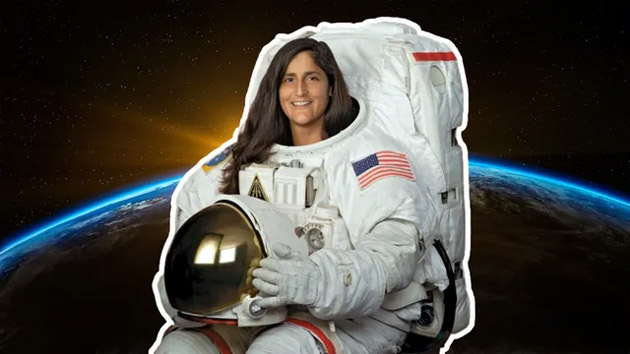By Girish Linganna
The launch of Boeing’s new CST-100 Starliner spacecraft, which was scheduled to carry astronaut Sunita Williams, an astronaut of Indian descent, into space for her third mission, has been delayed because of a technical issue. No new launch date has been announced. This was set to be the third space mission for Williams, who has spent 322 days in space and previously held the record for the most spacewalk hours by a woman, a title now held by Peggy Whitson.
Williams, 59, an inspiration for women aiming for space careers, was scheduled to fly again on Tuesday (May 7, 2024) in the new Boeing Starliner spacecraft. The launch was planned to take place at the Kennedy Space Center in Cape Canaveral, Florida, at 8:04 am (IST). However, with just 90 minutes left for launch, the Atlas V rocket’s liftoff was called off. NASA identified an issue with an oxygen relief valve on the rocket’s Centaur upper stages as the reason for the postponement.
Sunita Williams and NASA’s Barry Wilmore, who were scheduled to fly the Starliner to the International Space Station (ISS), have safely left the spacecraft. Although no new launch date has been announced, there are several backup options for rescheduling the launch as early as on Tuesday (May 7—May 8 in India), or Friday (May 10—May 11 in India).
The Atlas V rocket, built by United Launch Alliance, has been launching successfully since 2002, maintaining a perfect track record. However, this launch marks its first mission carrying astronauts. The CST-100 Starliner’s first trip with astronauts to the ISS was eagerly awaited and frequently postponed. Boeing is working hard to catch up with Elon Musk’s SpaceX in competing for NASA contracts. Two years after its initial unmanned test flight to the orbital lab, the gumdrop-shaped Starliner capsule is set for this mission. Its first solo journey to the ISS in 2019 did not succeed.
Boeing is under close public watch following a series of setbacks in its commercial airplane division, including a plane door plug incident in January. Boeing has faced a challenging journey getting the Starliner ready, experiencing numerous development delays and incurring over $1.5 billion in extra costs on a $4.2-billion fixed-price contract with NASA. The company is keen to launch its Starliner space project successfully to demonstrate progress and recover from delays and the over-$1.5-billion cost overruns.
While Boeing has faced challenges, SpaceX has established itself as a reliable orbital transporter for NASA. The space agency supports a new wave of privately developed spacecraft that can transport astronauts and other clients to the ISS. Under NASA’s ambitious Artemis programme, these spacecraft are also aimed at future missions to the moon and Mars.
While Boeing has been relatively quiet about its intentions to offer commercial Starliner flights, the spacecraft is set to directly compete with SpaceX’s Crew Dragon capsule. Since 2020, the Crew Dragon has been the sole spacecraft used by NASA to launch ISS crew into orbit from the US.
Once it takes off, the capsule will reach the space station in about 26 hours and connect with the orbiting research station, which is located approximately 250 miles (400 km) above Earth. The current ISS crew, consisting of four US astronauts and three Russian cosmonauts, will welcome them upon arrival.
Wilmore and Williams plan to stay at the space station for roughly a week before returning to Earth aboard the Starliner, which will make a parachute and airbag-assisted landing in the US Desert Southwest. This will be the first time such a landing system is used for a crewed NASA mission.
This test flight is particularly crucial for Boeing, which is currently addressing issues in its airplane business, including a recent incident where a cabin panel door plug blew out on a nearly new 737 MAX 9 in January, along with the earlier fatal crashes involving two 737 MAX jets.
NASA aims to maintain two different American transport options to the ISS, which is anticipated to be decommissioned around 2030. The agency is promoting the private development of new space stations that could succeed the ISS, potentially offering new destinations for the Starliner in future. The future performance of the Starliner will determine its schedule, but it is currently slated to conduct at least six more crewed missions to the space station for NASA, contingent on the success of the forthcoming flight test. (IPA )


